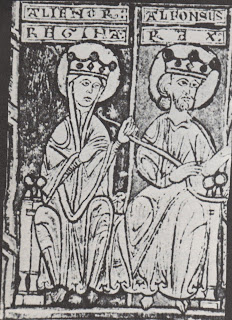Alfonso X the Wise granted Cuenca the title of town during the second half of the l2th century. Throughout the Early Middle Ages, the town underwent a period of splendour due to the strength of its textile industry, trade in wool, its craft industry and cattle. There was also an important glass industry, paper industry and coins were minted here.

As for ideological control, there was a Tribunal of the Inquisition in Cuenca from 1489. In the Community wars (1520-22), the town of Cuenca, whose population consisted mainly of noblemen and craftsmen, initially supported rebel Toledo, but it was not as strong as Toledo and soon gave in to Charles V.
During the l4th century, Cuenca developed an important wool trade, which suffered a serious crisis at the beginning of the l7th century, and this is reflected in the population, which dropped from 12,000 in 1591 to just over 3,000 in 1640.

Throughout the whole of the l7th century it was impossible to stop the decline in the cattle-raising industry and the wool industry and in the l5th century Bishop Palafox tried to overcome the crisis by setting up a carpet and cloth factory.
During the Wars of Independence, Cuenca was sacked by French troops and recovered later by the troops, among others, of Juan Martín the Stubborn. The town suffered further military attacks during the third Carlist war (1873).

The 19th century started with a more systematic way of exploiting the pine forests and the railway reached the town and both these factors brought about recovery.
From the l9th century onwards, the town divided into two very distinct areas: the high part, which was medieval and Baroque, was being left uninhabited and the low part, which was becoming the residence of the new middle classes, made up of traders and public administration workers, which were starting to develop. One symbol of Cuenca’s connections with art can be found in the reconstruction of the Casas Colgadas or Hanging Houses, a civil architectural work of the Baroque period of the l8th century: they were restored towards the end of the 1920s and, in the 1960s, were chosen by the Philippine painter Fernando Zóbel to house his magnificent collection of non-figurative Spanish art. The Houses were eventually used to house the Museum of Abstract art, which was inaugurated in 1966 and extended in 1978.

Other more recent steps in the same direction include the creation of the Faculty of Fine Arts of the University of Castile-La Mancha in Cuenca (1985) and the installation (early 1990s) of stained glass windows by contemporary artists in the old Gothic Cathedral, which was built in the l2th and l3th century.



No hay comentarios:
Publicar un comentario